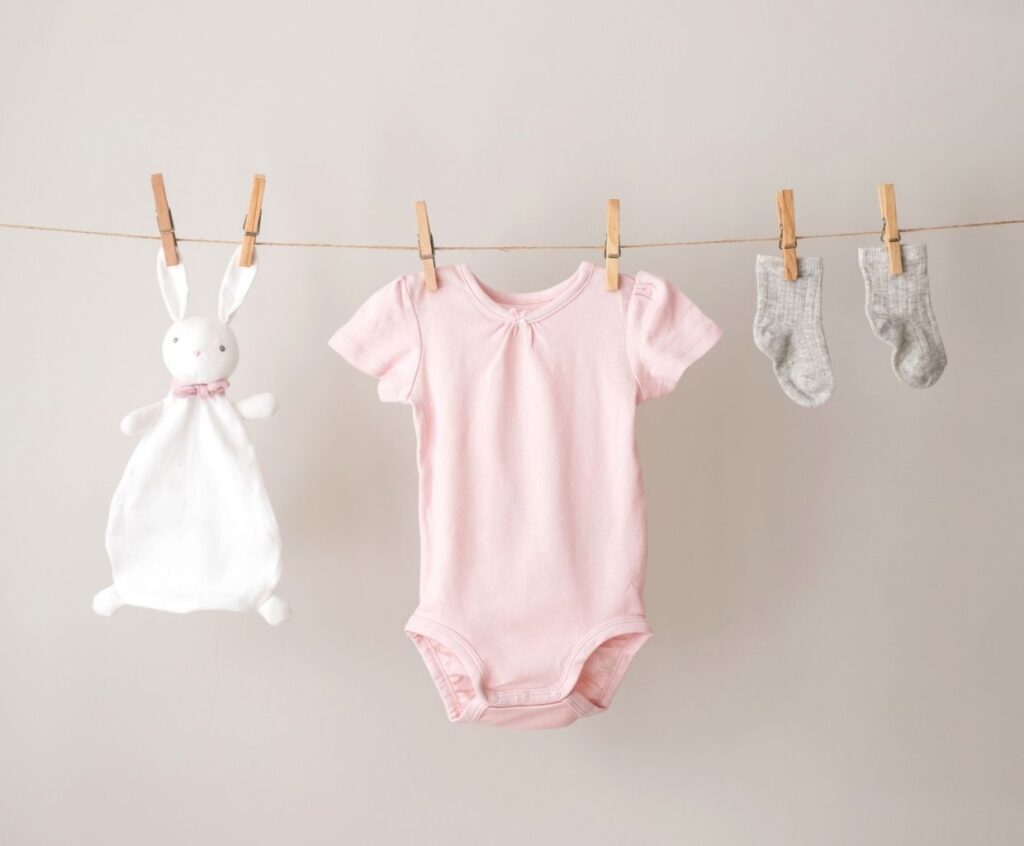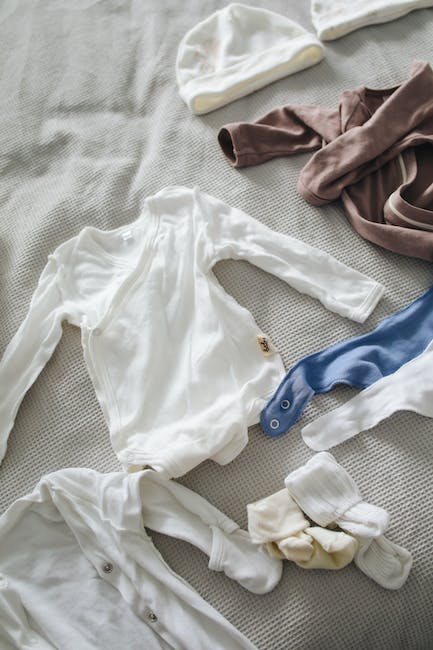How Many Baby Clothes Do You Need?
Welcome to our practical guide for new parents on determining the number of baby clothes you’ll need for your little bundle of joy.
As exciting as it is to shop for cute tiny outfits, it’s essential to balance having enough clothes to keep your baby comfortable and not go overboard with an excessive wardrobe.
Factors to Consider
Before we dive into the specifics, it’s essential to understand that every baby is different, and various factors can influence the number of clothes they require. These factors include:
1. Climate and Season
The weather plays a significant role in determining the type and quantity of clothing your baby will need. Living in a colder climate will require more warm clothing, such as onesies, sweaters, and jackets. On the other hand, in warmer regions, lighter outfits like rompers and T-shirts will be more suitable.
2. Laundry Frequency
Consider how often you plan to do laundry. If you prefer, You may need fewer clothes lifting smaller loads more frequently; you may need to plan on doing laundry less frequently; it’s advisable to have a more extensive collection to ensure you always have clean clothes available.
3. Spitting Up and Accidents
Babies are notorious for their ability to spit up or have diaper accidents, so take this into account when estimating the required number of clothes. Having a few extra sets of clothes can save you from running out of clean options during those messy moments.
Essential Baby Clothing Items
Now that we’ve considered the factors influencing your baby’s clothing needs let’s look at the essential clothing items you should have in your baby’s wardrobe:
-
- Onesies: These versatile pieces are a staple in any baby’s wardrobe. Aim for around 8-10 onesies.
-
- Sleepsuits: These cozy outfits are perfect for bedtime. Aim for around 4-6 sleepsuits.
-
- T-shirts and Pants: Opt for a few comfortable T-shirts and pants for everyday wear. Around 4-6 sets should be sufficient.
-
- Pajamas: Have a couple of soft and breathable pajama sets for a good night’s sleep.
-
- Sweaters/Jackets: Depending on the climate, 2 3 warm layers should be enough to keep your baby cozy.
-
- Hats and Socks: Don’t forget to keep your baby’s head and feet warm. I have a few hats. I have pairs of socks on hand.
-
- Bibs and Burp Cloths: Stock up on clothes to protect your baby’s clothes from spills and drool.
Tips for budget-friendly baby clothing options
1. Shop secondhand: Look for gently used baby clothes at thrift stores, consignment shops, or online marketplaces like eBay or Facebook Marketplace. Babies proliferate proliferate. These clothes are barely worn and can be found at a fraction of the original price.
2. Utilize hand-me-downs: Ask friends or family members if they have any baby clothes they no longer need. Babies outgrow their clothes so fast that these items are often in excellent condition. Join parenting groups: Look for local or online forums where parents often sell or give away baby clothes they no longer need. This can be a great way to find affordable clothing options.
4. Take advantage of sales and discounts: Keep an eye on watch discounts at baby clothing stores or online retailers. Sign up for newsletters or follow their social media accounts to stay informed about any special event.
5. Buy in bulk: Consider purchasing baby clothes in bundles or sets. This can often be more cost-effective than buying individual pieces.
6. Stick to basics: Focus on purchasing essential items like onesies, sleepers, and basic outfits that can be mixed and matched. Avoid buying too many trendy or seasonal items your baby may quickly outgrow.
7. DIY projects: If you enjoy sewing or crafting, consider making your baby’s clothes yourself. This can be a fun and budget-friendly way to create unique and personalized outfits.
8. Check out discount stores: Look for baby clothing at discount stores or outlets offering lower prices than retailers. These stores often carry quality clothing at more affordable prices.
9. Borrow from friends or family: If you have friends or family members with older children, ask if you can borrow baby clothes. This can be a great temporary solution until you can purchase your own.
10. Take care of the clothes you have: Properly care for your baby’s clothes to ensure they last longer. Follow washing instructions, use gentle detergents, and avoid drying clothes at high heat.
Remember, while it’s important, essential options are necessary for the baby’s comfort and safety when choosing clothing. Check for any potential rds like loose buttons or small parts that could pose a choking risk.”
Essential baby clothes checklist for new parents
Preparing for the arrival of a new baby can be overwhelming, especially when figuring out what clothes your little one will need. To help you out, we’ve put together an essential baby clothes checklist for new parents. Here are the must-have items:
1. Bodysuits: These one-piece garments are perfect for newborns. Aim for at least 6-8 bodysuits in both short and long sleeves.
2. Onesies: Similar to bodysuits, onesies are versatile and comfortable. I have around 6-I of these in various colors.
3. Sleepers: Sleepers or footed pajamas are ideal for nighttime. Aim for 4-6 sleepers to ensure you have enough for changes during the night.
4. Pants: Get a few soft pants for everyday wear. Aim for 4-6 pairs.
5. Socks and booties: Keep those tiny feet warm with 6-8 pairs of socks or booties.
6. Hats: Newborns lose heat through their heads, so hats are essential. Have at least 2-3 hats for different weather conditions.
7. Mittens: Have 2-3 pairs of mittens on hand to prevent your baby from scratching their face.
8. Swaddling blankets: Swaddling helps newborns feel secure and sleep better. Get 2-3 swaddling blankets for this purpose.
9. Burp cloths: Babies spit up frequently, so have 6-8 burp cloths to protect your clothes.
10. Bibs: As your baby’s sibs become necessary for eating solid foods, bibs become to clean your baby’s clothes during feedings.
11. Jackets or cardigans: Depending on the weather, have a couple of jackets or cardigans for layering.
12. Outfits for special occasions: Have a few dressy outfits for special events or outings.
Remember, babies proliferate overboard by buying too many clothes in newborn sizes. It’s wise to have a few larger sizes ready as well. With this checklist, you’ll have the essentials covered and be well-prepared for your little one’s arrival.
How Many Baby Clothes Do You Need – Conclusion
Remember, starting with a reasonable number of baby clothes is better than adjusting as needed based on your baby’s preferences and laundry routine.
By considering the climate, your laundry frequency, and the potential for accidents, you’ll be able to have a clinical and functional baby wardrobe. Happy parenting!


